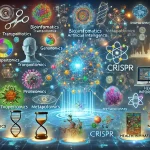
ChatGPT, Claude, Perplexity, Bing, Pi, Bard, Perplexity Chatbots and Artificial Intelligence in Education
December 22, 2023The classroom landscape has been transformed by the advent of ChatGPT, an artificial intelligence chatbot. The question arises: how should we approach teaching in this new era, and how can we effectively leverage this powerful tool? Here are some suggested strategies.
ChatGPT, powered by GPT-3 technology and fueled by extensive datasets and robust processing capabilities, serves as a conversational AI that engages users on a wide range of topics. It possesses the ability to compose songs, narrate stories, generate shopping lists, and provide reasons for various actions.
Consider utilizing ChatGPT to draft lesson plans, providing a unique perspective and generating creative content. Feel free to experiment and witness its potential firsthand.
Explore the possibility of ChatGPT assisting with students’ homework, offering a new avenue for academic support. However, it’s crucial to strike a balance between its use and fostering genuine learning experiences.
Launched on November 30, 2022, ChatGPT stands out as a groundbreaking public AI chatbot. While it marks a significant milestone, it’s important to acknowledge that more advancements in this field are likely to follow.
Upon its introduction, students quickly pondered the capabilities of ChatGPT, questioning whether it could write their English essays, compose speeches, or solve math problems. Simultaneously, educators faced the challenge of adapting their teaching methods in a landscape where students could rely on a chatbot for various tasks.
The IT staff, recognizing the potential impact on academic integrity, contemplated implementing measures to restrict access to ChatGPT. However, it’s acknowledged that such restrictions may not deter students from seeking its assistance.
As we navigate this evolving landscape, the key question remains: How do we integrate ChatGPT into education in a way that enhances learning and creativity, while maintaining the integrity of the educational process?
What is ChatGPT? More broadly, what do chatbots and AI entail, and how will their existence impact education? As educators, how can we navigate the classroom with this knowledge, and should we embrace it as a teaching and learning tool, or consider restricting access?
Let’s start by defining some key terms:
- ChatGPT: ChatGPT is an artificial intelligence assistant developed by OpenAI. It is a program designed to process and generate text, offering information and answers across a variety of topics. Functioning as a conversational tool, ChatGPT responds to natural language input, lacking personal experiences or feelings.
- GPT-3: GPT-3, or Generative Pre-trained Transformer 3, is a language generation model created by OpenAI. It is a neural network-based machine learning model trained on extensive text data to produce human-like text. GPT-3 is known for its versatility in language tasks, from translation to question answering.
- Chatbot: A chatbot is a computer program crafted to simulate conversation with human users, particularly online. Commonly employed in customer service and marketing, chatbots use natural language processing to comprehend and respond to user input, either following specific commands or engaging in more general conversations.
- Artificial Intelligence (AI): AI refers to the capacity of a computer or machine to execute tasks typically requiring human intelligence, including learning, problem-solving, and decision-making. AI systems may adopt various approaches, such as machine learning or rule-based systems, to perform tasks across diverse domains.
Now, considering these definitions, how does the existence of ChatGPT and AI influence education?
The implications are profound. ChatGPT, as an AI tool, has the potential to reshape teaching and learning dynamics. Educators may find it valuable for generating content, assisting with lesson plans, and even automating certain aspects of the learning process. However, the advent of AI in the classroom prompts critical questions about maintaining academic integrity, as students might seek its assistance for assignments and homework.
As we grapple with the impact of ChatGPT and anticipate future AI products, educators must weigh the benefits and challenges. Should we embrace these tools to enhance educational experiences, or should we consider implementing measures to control their use within the school environment?
The intersection of AI and education opens up a realm of possibilities, but it also necessitates careful consideration of the ethical and pedagogical implications associated with integrating these technologies into the learning environment.
Students grappling with existential questions: Students will inevitably confront profound questions about humanity and its distinctive features. They’ll ponder when AI is appropriate and when it is not, exploring the boundaries between human capabilities and artificial intelligence.
Questions of obsolescence: Contemplating their unique contributions, students will delve into questions of obsolescence. They’ll reflect on what they can do that AI cannot and strive to ensure their work, passions, and roles in society remain irreplaceable in the face of advancing technology.
Ethical considerations: Navigating the ethical landscape, students will critically examine the fairness, equity, and impartiality of AI use. They’ll ponder potential misuse by bad actors and seek to understand how to wield AI ethically, aligning its application with principles of fairness and societal good.
Teaching amidst AI existence: Acknowledging the existence of an AI product usable by students, educators may grapple with feelings of powerlessness and uncertainty. Crafting lesson plans in this reality poses a challenge: How can teachers ensure students are genuinely learning and not merely submitting AI-generated responses?
Emergency Response Section:
- Temporary reliance on traditional tools: While not a sustainable long-term solution, utilizing paper and pencil offers a temporary lifeline in the face of AI challenges. This approach, akin to a “break glass in case of emergency” measure, provides assurance that responses originate from students’ own cognitive processes. However, it’s emphasized that this is not a viable long-term strategy, given the persistent presence and impact of AI technology.
- Embrace collaborative learning and discussions: Drawing parallels with past technological advancements, educators can encourage collaborative learning and discussions. Similar to the limitations encountered with tools like Google Translate, authentic human conversation and relationship-building thrive in collaborative learning environments. Engaging in discussions prompts students to rely on their own cognitive efforts, making it a valuable educational strategy.
- Encourage creative demonstrations of learning: Fostering creativity becomes a powerful tool against AI reliance. Encouraging students to translate their acquired knowledge into creative projects helps them understand and internalize information. This approach not only differentiates learning but also reinforces understanding through the act of creating.
- Implement memory strategies and retrieval practice: Leveraging memory strategies, such as retrieval practice and brain dumps, reinforces long-term memory. By recalling information without reliance on external sources, students engage in meaningful reflection and strengthen their understanding of various topics. These strategies shift the focus from AI-generated responses to individualized learning and memory reinforcement.
Addressing AI in Teaching: As educators grapple with the existence of AI tools like ChatGPT, embracing them as teaching tools is an imperative response. The evolving landscape necessitates collaboration, experimentation, and shared insights within the education community. While it may take time to fully understand the implications, the collective efforts of educators will drive innovative teaching strategies that harness the potential of AI without compromising the integrity of the learning experience.
Ideas for AI Integration in Teaching: Exploring AI’s potential in education prompts innovative ideas. Collaborative brainstorming by humans and AI can lead to the development of effective teaching strategies. Educators, students, and AI can work together to shape the future of education, utilizing technology as a tool for enhanced learning experiences.
Implications for Education
A. ChatGPT in the Classroom:
- Immediate Student Reactions: The introduction of ChatGPT into the educational environment triggers swift responses from students. They explore the capabilities of the AI chatbot, testing its ability to assist with assignments, generate content, and potentially replace traditional learning methods. Students quickly consider the possibilities and challenges posed by ChatGPT in their academic pursuits.
- Concerns Among Teachers and IT Staff: Teachers and IT staff express apprehensions and concerns regarding the integration of ChatGPT into the classroom. Questions arise about the impact on academic integrity, as students may leverage the AI to complete assignments. Teachers grapple with how to adapt their teaching methods and maintain a balance between utilizing technology for educational purposes and preventing its misuse. Meanwhile, IT staff face the challenge of addressing potential disruptions caused by the introduction of ChatGPT.
B. Understanding the Technology:
- Defining ChatGPT, GPT-3, Chatbots, and AI: To navigate the implications, it is essential to define key terms related to the technology. ChatGPT is introduced as an AI chatbot, utilizing GPT-3 technology. Understanding the distinctions between ChatGPT, GPT-3, chatbots, and artificial intelligence is crucial for educators, students, and IT staff as they grapple with the integration of these technologies in the educational landscape.
- Unpacking the AI Terminology: Delving into the terminology associated with AI becomes imperative for all stakeholders involved in education. Unpacking the intricacies of artificial intelligence, chatbots, and language generation models like GPT-3 provides a foundation for informed decision-making. Recognizing the capabilities and limitations of these technologies is essential for educators to harness their benefits while addressing potential challenges and ethical considerations.
In summary, the introduction of ChatGPT into education prompts immediate reactions from students, raising concerns among teachers and IT staff. To effectively navigate this landscape, a comprehensive understanding of the technology, including key definitions and AI terminology, is essential. This knowledge forms the basis for informed decision-making and the development of strategies to incorporate AI responsibly in educational settings.
Addressing Challenges
A. Impact on Assignments:
- Students Using ChatGPT for Assignments: The rise of ChatGPT introduces challenges related to academic integrity as students turn to the AI chatbot for assistance with assignments. The ease of generating content raises concerns about the authenticity of student work and the potential for outsourcing intellectual efforts. Educators must navigate how to address this shift in student behavior while maintaining the integrity of the learning process.
- Challenges with Plagiarism Checkers: Traditional plagiarism checkers, including widely used tools like TurnItIn, face limitations in detecting content generated by ChatGPT. The unique nature of AI-generated responses, created afresh for each inquiry, poses challenges for existing plagiarism detection methods. As educators rely on these tools to uphold academic honesty, they must grapple with the evolving landscape of content creation and plagiarism prevention.
B. Attempts to Block ChatGPT:
- School Internet Filters: Schools and districts may opt to employ internet filters as a measure to block access to ChatGPT. While this approach aims to control usage within school networks, it raises questions about the effectiveness of such measures. Internet filters may prevent access through school devices on the school network, but they cannot regulate student access via personal devices on external networks, highlighting the limitations of this strategy.
- Limitations of Blocking: The decision to block ChatGPT through internet filters comes with inherent limitations. Students, equipped with personal devices and access to external networks, can circumvent school-based restrictions. The widespread availability of the AI tool poses a challenge to schools attempting to control its usage. Moreover, blocking may address immediate concerns but fails to offer a comprehensive solution, prompting educators and administrators to consider alternative approaches to manage the impact of ChatGPT.
In summary, addressing challenges posed by ChatGPT involves navigating the impact on assignments, acknowledging students’ use of the AI for academic tasks, and understanding the limitations of existing plagiarism checkers. Attempts to block ChatGPT through school internet filters reveal both the potential and inherent constraints of such measures, prompting a broader consideration of strategies to maintain academic integrity in the evolving landscape of AI in education.
Utilizing AI Responsibly
A. ChatGPT’s Limitations:
- Potential Inaccuracies: Acknowledging ChatGPT’s limitations is crucial in promoting responsible usage. The AI chatbot, while powerful, may occasionally generate inaccurate information. Users must be aware that the responses provided are not infallible, and critical thinking remains essential in evaluating the accuracy of the information generated. Educators should guide students to approach ChatGPT with a discerning mindset, understanding its imperfections.
- Ethical Considerations: The ethical dimension of using ChatGPT comes into focus, emphasizing the need for responsible AI utilization. As an artificial intelligence, ChatGPT operates based on the data it has been trained on, and ethical considerations arise in terms of potential biases in its responses. Users must be cautious of the ethical implications of relying on AI for decision-making, particularly in sensitive areas that require human judgment.
B. Positive Uses of ChatGPT in Education:
- Collaborative Learning Strategies: Despite its limitations, ChatGPT can be leveraged positively in education through collaborative learning strategies. Encouraging students to engage in discussions and collaborative activities fosters an environment where AI complements human interaction. The tool becomes a facilitator for shared learning experiences, prompting students to apply critical thinking and communication skills in conjunction with AI-generated insights.
- Encouraging Creative Demonstrations: ChatGPT’s integration into education can be harnessed to encourage creative demonstrations of learning. Rather than relying solely on AI for information retrieval, educators can prompt students to use the tool as a resource for inspiration. Students can then channel their creativity to produce unique projects, presentations, or artifacts that demonstrate a deeper understanding of the subject matter.
- Implementing Memory Strategies: AI can play a supportive role in memory-enhancing strategies, such as retrieval practice and brain dumps. While these strategies traditionally involve individual effort, incorporating AI as a tool for information retrieval aligns with responsible usage. Students can leverage ChatGPT to reinforce their understanding of topics by recalling and organizing information, turning the AI into an adjunct to memory-building exercises.
In summary, utilizing ChatGPT responsibly involves recognizing its limitations, addressing potential inaccuracies, and navigating ethical considerations. Embracing positive uses of ChatGPT in education entails incorporating the tool into collaborative learning strategies, encouraging creative demonstrations, and implementing memory-enhancing practices that complement human cognition. Balancing the benefits of AI with responsible usage ensures a constructive and ethical integration of technology in educational settings.
Teaching Strategies for Tomorrow
A. Adapting Lesson Plans:
- Short-term Solutions: a. Using Paper and Pencil: In the short term, educators may opt for traditional methods like using paper and pencil to ensure that students are actively engaged in generating their responses. This offers a tangible way to verify the authenticity of students’ work and encourages independent thinking.
b. Emphasizing Collaborative Learning: Collaborative learning strategies can be prioritized to promote engagement and discussion among students. By fostering a collaborative environment, educators leverage the social aspect of learning, making it less conducive to AI-generated responses.
c. Encouraging Creative Demonstrations: Engaging students in creative projects and demonstrations becomes a vital strategy. This not only shifts the focus from rote learning but also encourages the application of knowledge in unique ways that go beyond the capabilities of AI.
- Long-term Considerations: a. Embracing AI as a Teaching Tool: Looking ahead, educators can explore integrating AI, like ChatGPT, as a teaching tool rather than a threat. Long-term solutions involve incorporating AI responsibly into lesson plans, leveraging its capabilities to enhance learning experiences, and preparing students for a future where human-AI collaboration is commonplace.
b. Addressing the Evolution of Education: Long-term planning should include addressing the broader evolution of education in the digital age. This involves reimagining curricula, assessment methods, and teaching approaches to align with the changing landscape of technology and AI. Educators need to be at the forefront of this evolution, actively shaping the future of education.
B. Educating Students about AI:
- Preventing AI-aided Cheating: Educating students about the ethical use of AI is paramount. Teachers can explicitly communicate the consequences of using AI to cheat and emphasize the importance of personal effort in learning. This awareness helps in preventing the misuse of AI tools for academic dishonesty.
- Promoting Ethical AI Use: Integrating discussions on ethical AI use into the curriculum is essential. Students should understand the ethical considerations surrounding AI, including biases and potential limitations. This knowledge empowers them to use AI responsibly and consider its implications in various contexts.
- Staying Informed and Proactive: Students should be encouraged to stay informed about the advancements in AI and its impact on society. Promoting a proactive approach to learning about technology ensures that students are equipped to navigate the evolving landscape responsibly. This includes understanding the capabilities, limitations, and ethical considerations associated with AI.
In summary, teaching strategies for tomorrow involve both short-term solutions, such as emphasizing collaborative learning and creative demonstrations, and long-term considerations, including embracing AI as a teaching tool and addressing the broader evolution of education. Educating students about AI is pivotal, focusing on preventing AI-aided cheating, promoting ethical use, and instilling a proactive approach to staying informed in an AI-driven world.
Conclusion
A. The Ongoing Evolution of AI in Education: The integration of AI, exemplified by ChatGPT, marks a significant evolution in education. As technology continually advances, the role of AI in the classroom is not a static phenomenon but an ongoing evolution. Educators, students, and administrators must recognize that AI will play an increasingly prominent role in shaping the future of teaching and learning.
B. Navigating Challenges and Embracing Opportunities: Navigating the challenges presented by AI in education requires a nuanced approach. Challenges such as AI-aided cheating, plagiarism detection, and the potential impact on traditional lesson plans necessitate thoughtful consideration. Simultaneously, educators have the opportunity to embrace the positive aspects of AI, leveraging it as a teaching tool and encouraging collaborative and creative learning strategies. Striking a balance between addressing challenges and harnessing opportunities is essential for the successful integration of AI in education.
C. Collaborative Efforts for the Future of Teaching and Learning: The future of teaching and learning is a collective endeavor that requires collaboration among educators, students, IT staff, and administrators. As AI becomes an integral part of the educational landscape, collaborative efforts are crucial for developing responsible usage policies, innovative teaching strategies, and educational frameworks that adapt to the evolving role of technology. By working together, stakeholders can shape a future where AI enhances education while upholding the values of academic integrity, critical thinking, and ethical use.
In conclusion, the ongoing evolution of AI in education prompts a dynamic exploration of its impact, challenges, and potential. Navigating this landscape involves not only addressing immediate concerns but also embracing the opportunities that AI presents. Through collaborative efforts, the educational community can actively shape the future of teaching and learning in a technologically advanced era.

















